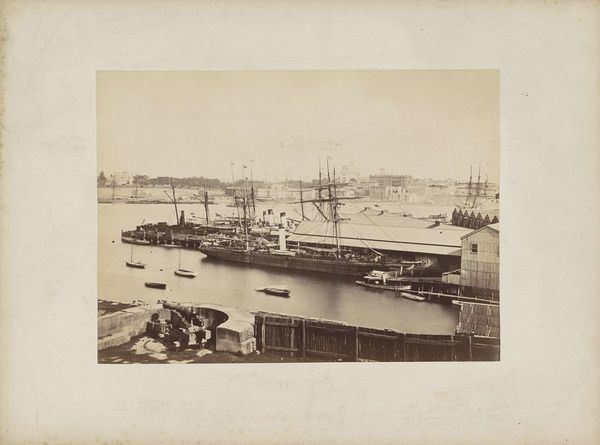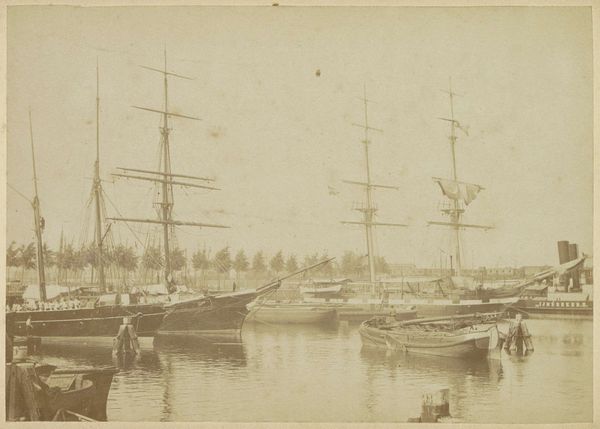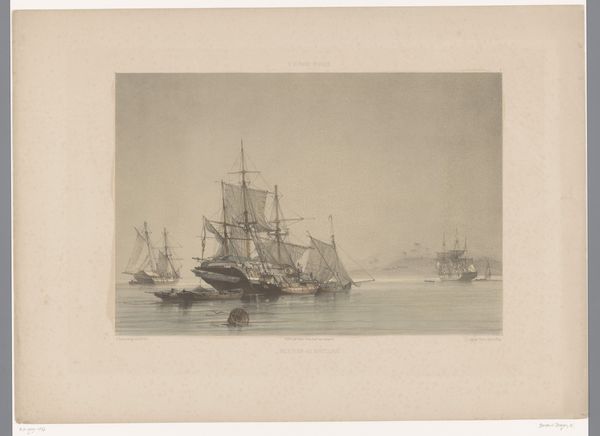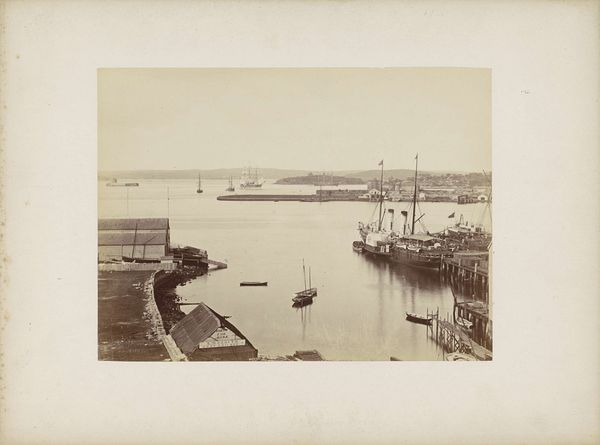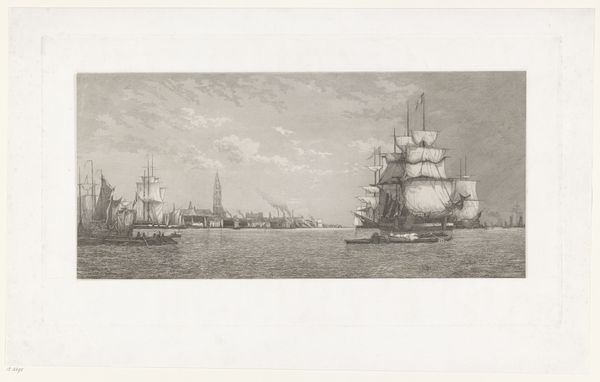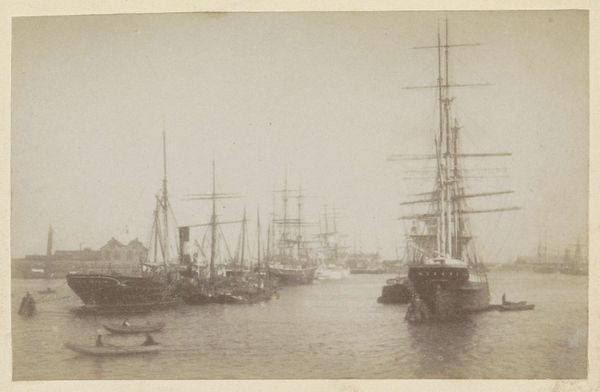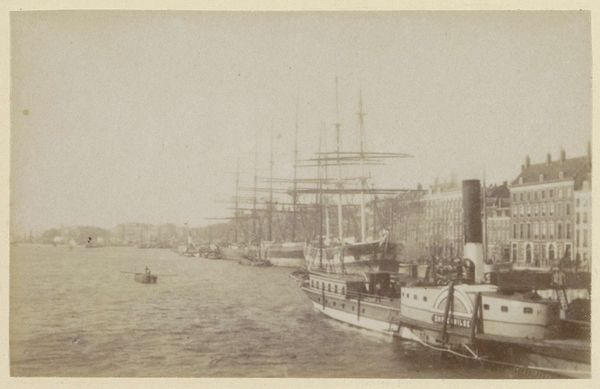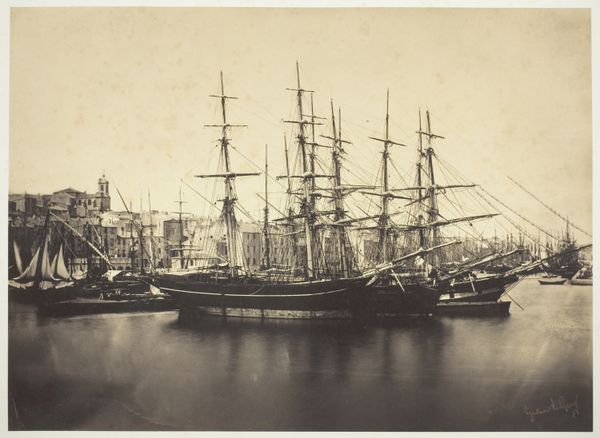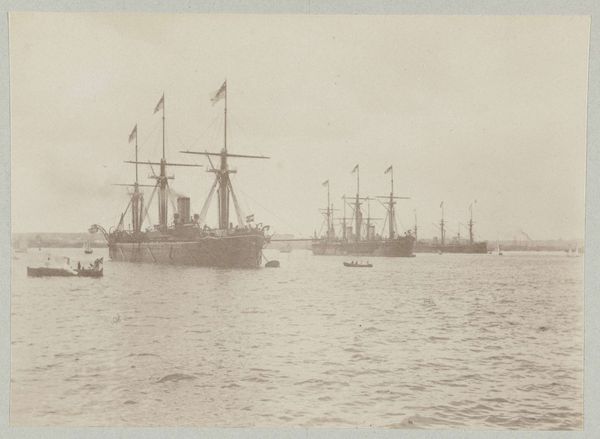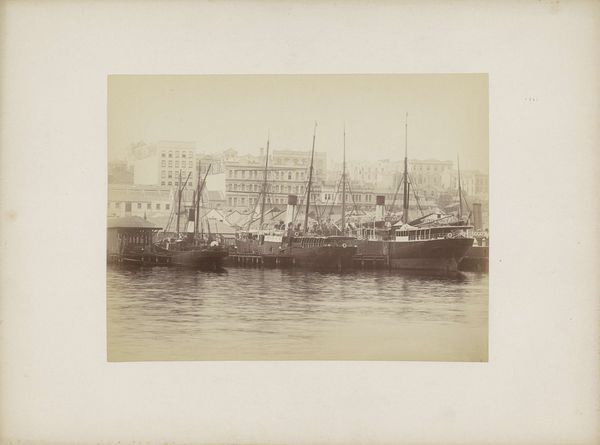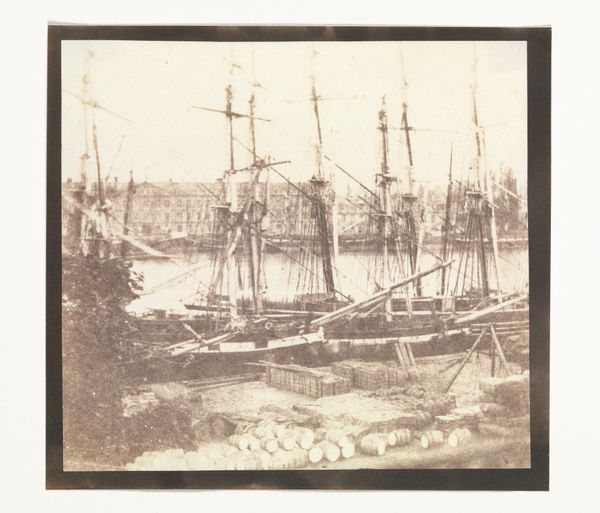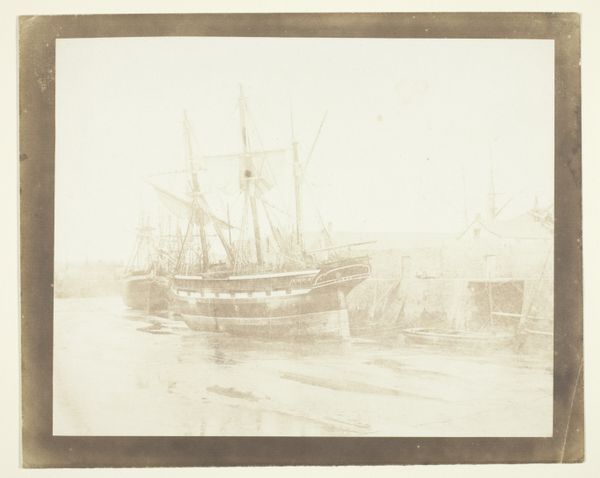
photography, gelatin-silver-print
#
ship
#
landscape
#
photography
#
orientalism
#
gelatin-silver-print
#
watercolor
Dimensions: height 241 mm, width 324 mm
Copyright: Rijks Museum: Open Domain
Editor: Here we have a gelatin silver print, "Schepen in de haven van (vermoedelijk) Sydney," or "Ships in the harbor of (presumably) Sydney" by Charles Bayliss, dating from around 1890 to 1910. It's held at the Rijksmuseum. The hazy, almost sepia tones give it a very soft, nostalgic feel. How do you read the formal qualities of this composition? Curator: The photograph presents a compelling study in spatial organization and tonal gradation. Note the strategic placement of the large sailing ship, its mass balanced by the smaller vessels in the foreground. The hazy quality you mentioned—is it a softening agent or possibly even the effects of aging on the photographic emulsion itself? The interplay of light and shadow, subtly modulated across the water and the ship's hull, creates depth. Are the compositional elements working to convey an idea about naval power and international trade? Editor: That’s a really interesting point about the balance. The smaller boats almost seem to orbit the larger ship. I hadn't considered the effects of the materials themselves as part of the composition, and how the effect creates space. The soft light definitely adds depth and makes the scene feel immense. Curator: Exactly. Think about the photographer’s choices. He had control over where to set the camera, how to arrange objects in the viewfinder. What kind of impact do you think Bayliss was looking to produce when manipulating those formal choices? Are these forms, taken all together, presenting a deliberate meaning? Editor: Perhaps he aimed to capture not just a scene, but also a feeling – a serene harbor and a ship representing strength. It is interesting to see how he organized these individual elements to project that emotion. Curator: Precisely. Paying close attention to structure unlocks ways of reading an image.
Comments
No comments
Be the first to comment and join the conversation on the ultimate creative platform.
